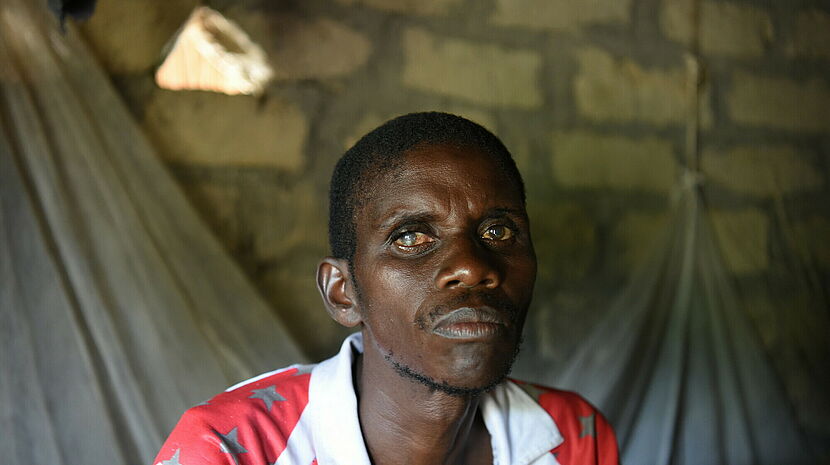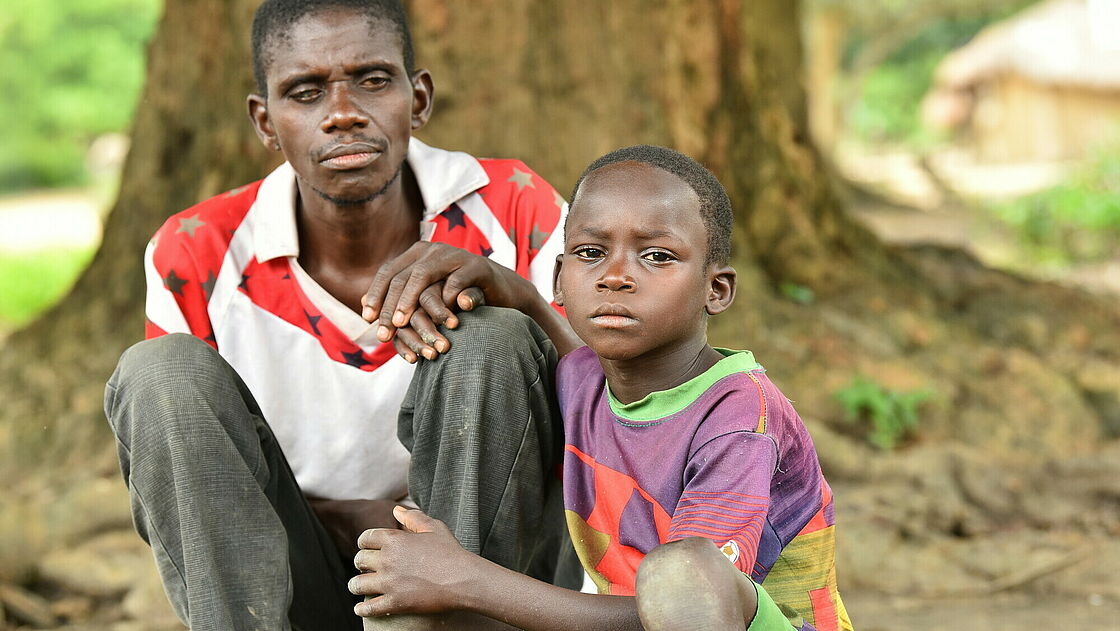River Blindness:
The Story of a Fisherman Blinded by a Preventable Disease

©CBM
This fisherman from the Democratic Republic of Congo (DRC), lost his sight to River Blindness (Onchocerciasis) one of the Neglected Diseases (NTDs). Wushidi’s eyesight could have been saved – with better medical care, community awareness and health initiatives. Fortunately, others, like his son Saiko, can still be saved.
Wushidi, 42 years old and the father of 11 children, was a fisherman in the East African country of the Democratic Republic of Congo who spent every day on the Ubangi River, except on occasional rest days. Fishing was not just a livelihood, but a way of life. When the catch was plentiful, he sold part of it and used the money to buy daily necessities like salt or soap. He then brought the rest home to feed his family.
Fishing is a significant part of the economy in the Congo Basin, providing food and income for millions of people. It is a craft that is shaped by traditions, the natural environment and the close relationships of local communities.
The beginning of blindness
Things took a drastic turn for Wushidi when his eyes began to itch, a symptom of River Blindness. Only when it was too late and he had already gone blind that he learnt about this disease, which experts call Onchocerciasis. River blindness is one of the "Big Five" of the 17 Neglected Tropical Diseases (NTDs) – along with Trachoma, Elephantiasis, Soil-transmitted helminths and Schistosomiasis (bilharzia). These five NTDs are the most common. River Blindness is caused by the parasitic worm Onchocerca Volvulus and transmitted by the bite of infected black flies.
When a female blackfly bites an infected person during a blood meal, it also digests the microfilariae. The larva continues to grow inside the black fly. This larva is then transmitted to the next human host through further bites. If left untreated, the disease slowly leads to blindness. Almost all people who suffer from Onchocerciasis live in sub-Saharan Africa.
Blindness is a late stage of the disease. There is no vaccine that prevents River Blindness. However, if an infected person receives the pharmaceutical drug Ivermectin in time, the disease can be treated and stopped - because it kills the parasites in the infected human body and prevents them from causing damage such as skin diseases and blindness. The blackfly then has fewer and fewer "infected humans" to suck on and spread the larvae. The treatment has to be done every year because Ivermectin only kills the baby worms - and the adult worms live and reproduce the larvae for 15 to 20 years.
This medicine is administered as Mectizan, which is provided free of charge to CBM-supported Mass Drug Administration (MDA) campaigns through the Mectizan Donation Programme.
Wushidi’s story is a reminder of the health challenges faced by many communities, particularly in rural areas where health facilities are few or under-resourced. People are often diagnosed when it is too late.
The family's struggle.

Wushidi’s blindness affected not only himself but also his entire family. His wife has taken responsibility for growing cassava, maize and melons. She works in the fields from 7 am to 11 am every day, while Wushidi takes care of their children.
Although Wushidi’s blindness limits his participation in community activities, he continues to attend community meetings. Here he shares his experiences and educates those around him about the danger of River Blindness and the importance of protecting their families and others by taking preventive medicine. Friends and neighbours visit him. With the help of his son Saiko, he returns the visits.
The Importance of Medical Care
The story of Wushidi also draws attention to the crucial role of medical care. Unfortunately, Wushidi’s eyesight cannot be restored. He is irretrievably blind due to River Blindness. However, by taking Mectizan, his wife, son Saiko and his other children, as well as the entire community, can be saved from the same fate. Education, access to healthcare and global health initiatives can transform lives in the most remote parts of the world.
In 2021 alone, CBM treated 53.5 million people for NTDs such as River Blindness and Trachoma, through mass drug administration, hygiene training and surgical interventions. By focusing on these NTDs, CBM has prevented blindness and improved the overall well-being of communities at risk.
CBM NTDs Reach in 2022
- 48,674,438 individuals received medications for eye-related NTDs.
- 29,888 participants received hygiene training to protect against NTDs.
- 16,487 surgeries were performed to prevent Trachoma-related blindness.